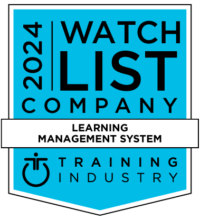Organizations don’t build business, people do. Investing in your people is an investment in your most valuable asset. And, it’s no secret that retaining existing employees is much more cost effective than recruiting and training new ones. But how do we do that?
Engaging excellence is a collaborative effort, requiring a culture and a climate conducive to maximizing human potential. It is a shared responsibility and a reciprocal process rooted in positive relationships.
People will stay in jobs they do not like if they enjoy the people. And they will leave jobs they love if the relationships are too stressful. People need to feel connected, committed and valued to embrace and engage excellence in themselves and in others. People are committed to relationships and experiences that hold value for them. Values are the core connectors that keep individuals and organizations in alignment with long-term goals and vision. Without shared values, individuals have no reason to connect or commit.
Strong leadership with a clear structure for supporting and encouraging excellence is the glue that grounds individual and collective capacity for creative collaboration.
It is no secret that we are all more productive when we work from our natural abilities. It is the difference between being ‘in the zone’, and swimming upstream. Natural abilities take far less energy than learned skills, and most of the time, we enjoy using our natural abilities. Expressing who you are through what you do takes conscious effort.
Getting the right people in the right role takes time, and requires commitment to determining what strengths individuals bring to the job, and who is best suited for specific roles and responsibilities. Wise organizations are increasingly committed to help people understand themselves in order to be more conscious contributors.
How does a company provide structure and support? Your organization should be structured in a manner that:
- Allows people to do their best work
- Gives individuals responsibility and authority
- Holds people accountable for decisions and actions
- Reduces redundancy and layers of bureaucracy
- Recognizes and rewards effort and accomplishments
Employees need to know what is expected of them and how they will be evaluated. They need input into the roles, goals and elements of evaluations so they can be proactive and feel a sense of control over their work and their opportunities for advancement. Redundancy and excessive bureaucracy rob employees of power and control over their work and zap valuable energy.
Organizations don’t build business, people do.
Leadership is a significant contributing factor to the culture and the awareness of strengths-based thinking. Distinguishing between leadership and management is also crucial to cultivating an environment where employees feel engaged and appreciated.
Your people are your business. Relationships with internal and external customers are the primary drivers determining your bottom line, and the primary tools for fostering organizational excellence. Effective leaders engage, empower, and equip employees in a manner that fosters ownership, accountability, productivity and retention. Engaging excellence is a reciprocal process and a shared responsibility.
ABOUT THE AUTHOR
Gail Ostrishko MS, LPC is a creative catalyst for building relationships and organizations from the inside out. Gail works with individuals and organizations to get the right people in the right roles by identifying and maximizing individual and collective strengths and creative capacity. She is a counselor, facilitator, speaker, author and coach, and a Senior Consultant with JER HR Group. Gail utilizes the state-of-the-art Highlands Ability Battery as a foundation for encouraging people to pursue their passion.






